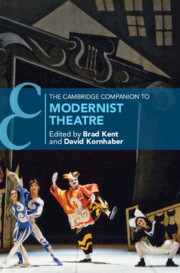Refine search
Actions for selected content:
3387710 results
Effects of climate and within-tree competition on cocoa pod production in Ghana
-
- Journal:
- Experimental Agriculture / Volume 61 / 2025
- Published online by Cambridge University Press:
- 29 August 2025, e25
-
- Article
-
- You have access
- Open access
- HTML
- Export citation
Assessing the efficacy of core needle biopsies in the diagnostic workup of thyroid nodules
-
- Journal:
- The Journal of Laryngology & Otology / Accepted manuscript
- Published online by Cambridge University Press:
- 29 August 2025, pp. 1-17
-
- Article
- Export citation
A leaky-dielectric fluid pump
-
- Journal:
- Journal of Fluid Mechanics / Volume 1018 / 10 September 2025
- Published online by Cambridge University Press:
- 29 August 2025, A14
-
- Article
-
- You have access
- Open access
- HTML
- Export citation
On the mechanism and conditions for k−1 scaling in turbulent velocity spectra
-
- Journal:
- Journal of Fluid Mechanics / Volume 1018 / 10 September 2025
- Published online by Cambridge University Press:
- 29 August 2025, A13
-
- Article
-
- You have access
- Open access
- HTML
- Export citation
Partisanship and Racial Affect Among Black and Latine Americans: Evidence from 2016 to 20 Panel Data
-
- Journal:
- Journal of Race, Ethnicity and Politics , First View
- Published online by Cambridge University Press:
- 29 August 2025, pp. 1-22
-
- Article
-
- You have access
- Open access
- HTML
- Export citation
A case series on TNF-α inhibitors for APS- induced high-risk pregnancies
-
- Journal:
- Journal of Clinical and Translational Science / Volume 9 / Issue 1 / 2025
- Published online by Cambridge University Press:
- 29 August 2025, e186
-
- Article
-
- You have access
- Open access
- HTML
- Export citation
The effect of diet on Parkinson’s disease progression, symptoms and severity: a review of randomised controlled trials
-
- Journal:
- Proceedings of the Nutrition Society , First View
- Published online by Cambridge University Press:
- 29 August 2025, pp. 1-15
-
- Article
-
- You have access
- Open access
- HTML
- Export citation
From Taxi to Didi: Voice and Balancing in the Industrial Transition
-
- Journal:
- Law & Social Inquiry , First View
- Published online by Cambridge University Press:
- 29 August 2025, pp. 1-23
-
- Article
-
- You have access
- Open access
- HTML
- Export citation
Antibiotic awareness: exploring knowledge among culturally and linguistically diverse patients
-
- Journal:
- Antimicrobial Stewardship & Healthcare Epidemiology / Volume 5 / Issue 1 / 2025
- Published online by Cambridge University Press:
- 29 August 2025, e193
-
- Article
-
- You have access
- Open access
- HTML
- Export citation
On K-stability of blow-ups of weighted projective planes
- Part of
-
- Journal:
- Proceedings of the Royal Society of Edinburgh. Section A: Mathematics , First View
- Published online by Cambridge University Press:
- 29 August 2025, pp. 1-17
-
- Article
- Export citation
Against Epistemic Harm
-
- Journal:
- Episteme , First View
- Published online by Cambridge University Press:
- 29 August 2025, pp. 1-21
-
- Article
-
- You have access
- Open access
- HTML
- Export citation
The algebraic structure of Dyson–Schwinger equations with multiple insertion places
- Part of
-
- Journal:
- Canadian Mathematical Communications / Volume 1 / 2025
- Published online by Cambridge University Press:
- 29 August 2025, e2
-
- Article
-
- You have access
- Open access
- HTML
- Export citation
Partition, Passport and the Documentary Life of Belonging
-
- Journal:
- Critical Pakistan Studies ,
- Published online by Cambridge University Press:
- 29 August 2025, pp. 1-14
-
- Article
-
- You have access
- Open access
- HTML
- Export citation
Negative ties highlight hidden extremes in social media polarization
- Part of
-
- Journal:
- Network Science / Volume 13 / 2025
- Published online by Cambridge University Press:
- 29 August 2025, e10
-
- Article
-
- You have access
- Open access
- HTML
- Export citation
Politics and algorithmic articulation of law: tracing the discrepancies and backstage decision-making in the development of the profiling algorithm in Polish labour market policies
-
- Journal:
- International Journal of Law in Context , First View
- Published online by Cambridge University Press:
- 29 August 2025, pp. 1-20
-
- Article
-
- You have access
- Open access
- HTML
- Export citation
Diverse mineral assemblages of primary Be minerals from pegmatites of the Třebíč Pluton, Moldanubian Zone, Czech Republic; an effect of early tourmaline crystallisation
-
- Journal:
- Mineralogical Magazine / Accepted manuscript
- Published online by Cambridge University Press:
- 29 August 2025, pp. 1-34
-
- Article
-
- You have access
- Export citation
Between State Control and Banking Power: Spanish Banking Supervision Under Franco (1940–1975)
-
- Journal:
- Enterprise & Society , First View
- Published online by Cambridge University Press:
- 29 August 2025, pp. 1-25
-
- Article
-
- You have access
- Open access
- HTML
- Export citation
Velocity crisis of a bio-inspired self-propelled hyperelastic foil in pitching motion
-
- Journal:
- Journal of Fluid Mechanics / Volume 1018 / 10 September 2025
- Published online by Cambridge University Press:
- 29 August 2025, A8
-
- Article
-
- You have access
- Open access
- HTML
- Export citation

The Cambridge Companion to Modernist Theatre
-
- Published online:
- 28 August 2025
- Print publication:
- 11 September 2025

The Nation at Sea
- The Federal Courts and American Sovereignty, 1789–1825
-
- Published online:
- 28 August 2025
- Print publication:
- 11 September 2025





